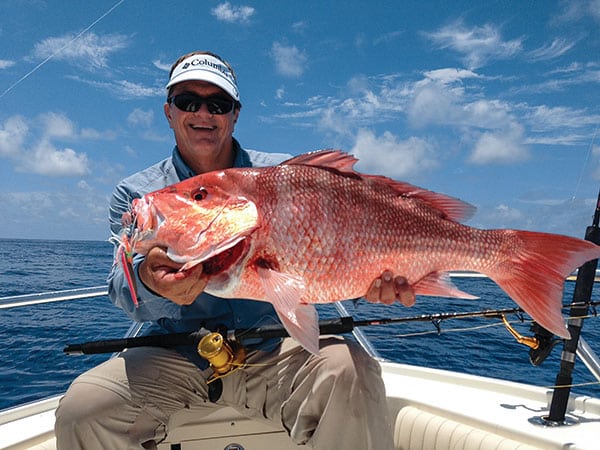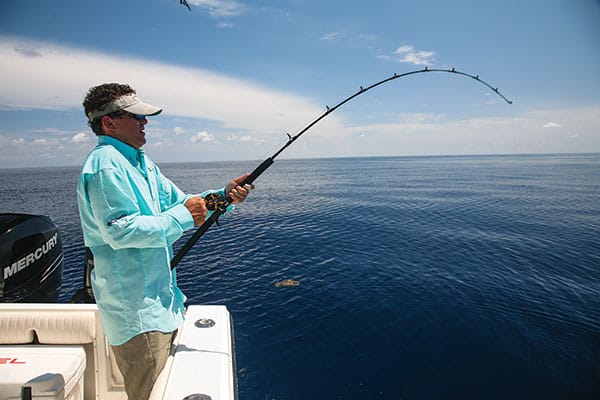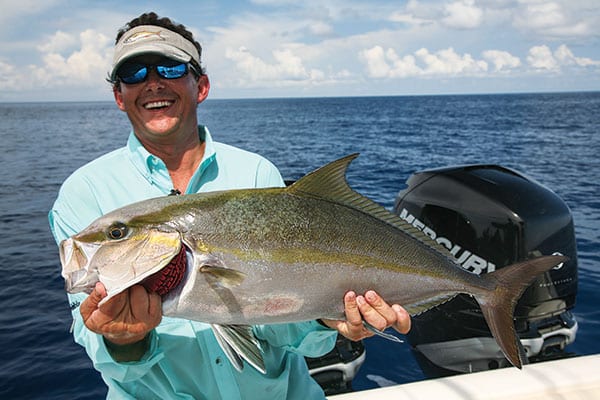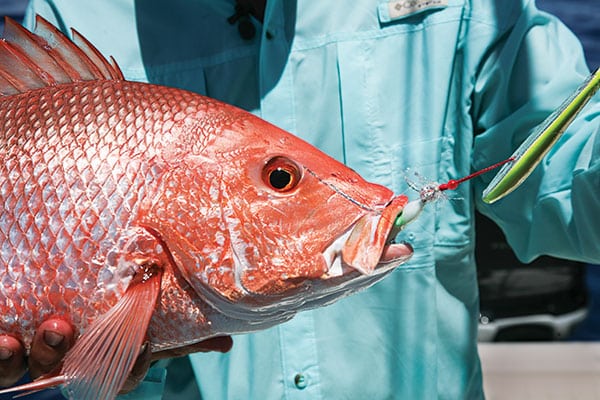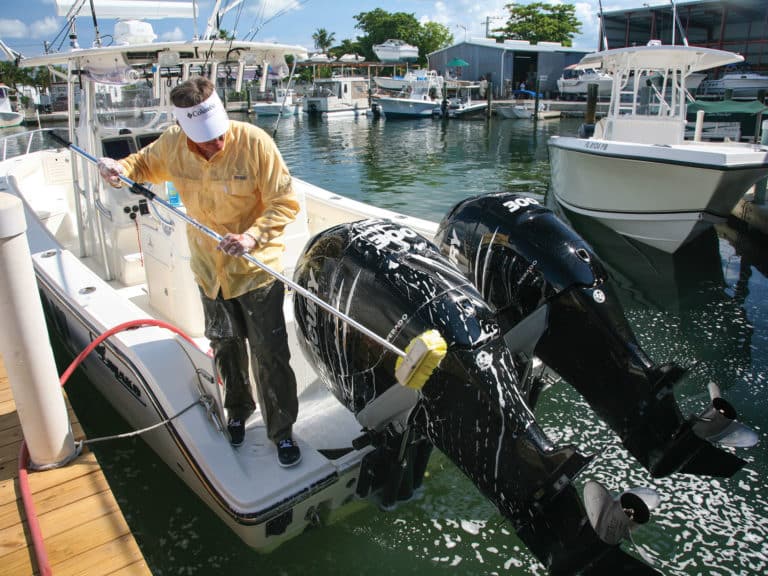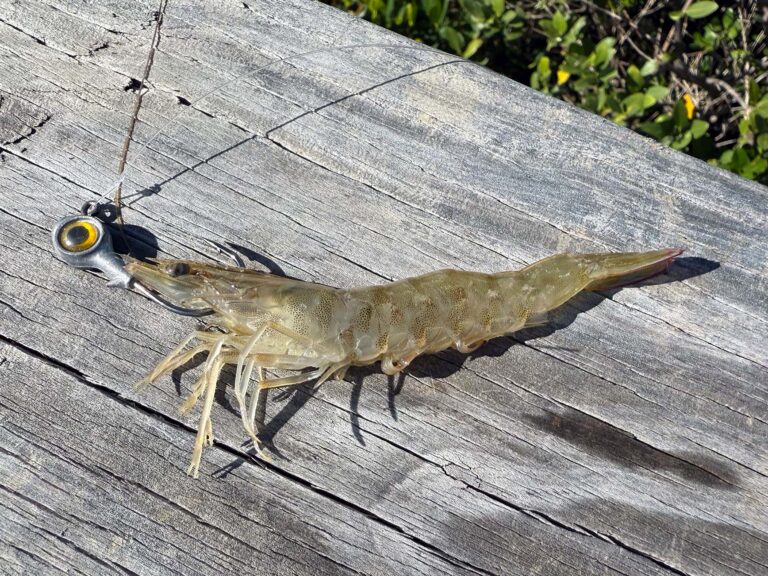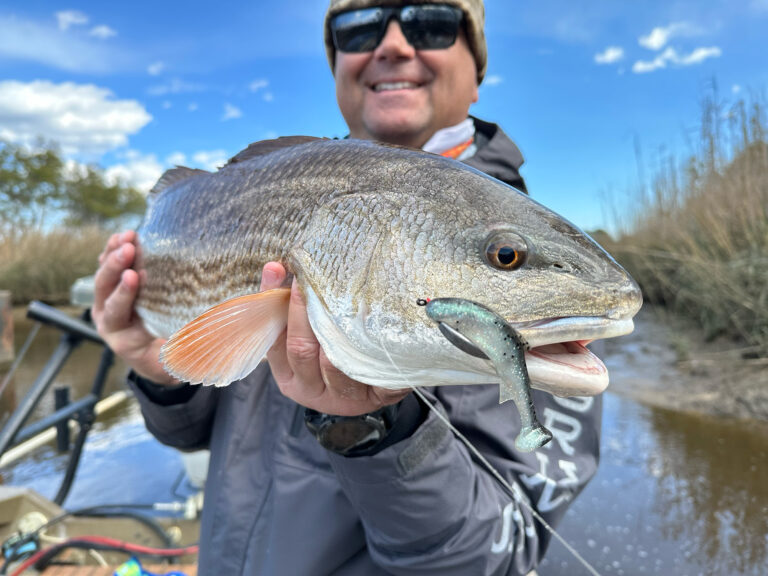Flutter-style irons are scorching hot! Plainly put: They produce fish, and you don’t have to be an expert to score with them. Unlike traditional deep jigs — such as the arrow, ball and even lima-bean (compressed) heads — flutter jigs have their own distinct actions. So much so, they require less angler skill to fool fish. They’re the great equalizer.
Their wide and, in some cases, offset bodies prompt them to scurry and dart when given slack, and then race upward with a tighter, more-frantic wobbling action on the retrieve. Basically, to keep them working, an angler needs only to rear up on the rod, create slack by suddenly dropping the rod and taking up line, and then rear back up on the rod, and repeat. Yet flutter-style irons are now being used in unorthodox ways, with the end result being even more fish. Consider five proven approaches, and how they might help you score more fish.
“Twist and Shout” Blum
Quick snaps are basically a required part of flutter-jigging. However, Darren Blum radically redefines “quick.” Having fished with him twice, I can attest that he works flutter jigs faster and more erratically than anyone I know, and he catches lots of impressive fish offshore of Sarasota and Bradenton, Florida. “When I flutter-jig, I try to work the jig as erratically as possible with fast, sharp movements,” says Blum. “I believe it is key to fooling more bottomfish. The sharp movements not only add more action to the jig, but also set the hook before the fish knows what’s up.
“I often watch my clients and friends who are trying to master flutter-jigging, and most work the jig too slowly; they don’t get as many strikes, and when they do, some of the fish come unbuttoned due to a poor hook-set. Work it fast, work it hard, and those jigs will catch fish for you.”
Here’s Mud in Your Eye
In sharp contrast to Blum, I often slow my retrieve to a semigentle “mudding” along the bottom. My grouper and snapper catches haven’t suffered. In fact, when fishing with Blum this past June, I snatched a 20-pound American red snapper with this technique.
Slowly bouncing the jig a foot or so along the bottom lends the illusion of a crustacean or panicked baitfish trying to burrow in the sand or mud; the action often forces fish to react or miss out on a meal. In addition, over wrecks, hard reefs and rock piles, I often work the rod up and down, and let the iron repeatedly tap the structure and make noise. Barry Gibson, a former SWS editor, revealed this trick decades ago, describing how the sound helped him catch more codfish when jigging. This same “clunking” alerts all sorts of Southern bottomfish to what they perceive as an easy meal.
“Circle Hook” Rick
Norwalk, Connecticut’s Rick Mola is an innovative angler. More than a decade ago, he was preaching the use of in-line circle hooks with diamond- and flutter-style jigs, not only hooking more fish but diminishing the odds of hooking them deeply. His catches and healthy releases of striped bass and bluefish have since soared.
Another twist of Mola’s is to move the assist hook from the top of a jig to the bottom, complete with a circle hook. He then forgoes the radical rod whipping, opting to hold the rod parallel to the water and “squid” the jig — that is, rapidly wind it up several feet, pause and repeat. The jig’s tight-wobbling action and fast upward trek draw strikes, while the circle hook converts them to catches.
“The tactic works beautifully in Long Island Sound with bluefish and stripers,” says Mola. “On a recent trip to Louisiana, I outscored my fishing companions with redfish to 40 pounds, snappers, jacks and the only five grouper of the trip. I got their attention!”
Flutter-Trolling
The erratic actions of flutter jigs are also effective when trolling up striped bass, bluefish, snook, tarpon, Spanish mackerel, kingfish, jack, bonito, tuna, dolphin and even wahoo, in addition to a variety of bottomfish.
Add a swivel either to the head of the lure or at the end of a 10-foot-long fluorocarbon leader (the exact strength depends on the species sought, and light wire can be substituted for toothy predators). The swivel is necessary to the jig’s full action, and prevents line twist. One or two flat lines can be trolled — or as many as four outfits (two from the flat position and two from the angled rod holders just behind them). To keep the jigs apart, stagger their distances, and keep the flat-line jigs inside the farthest two jigs.
Based on water depth and species, troll just quickly enough to keep the jigs stretched out behind the boat and beneath the surface; the faster you go, the more they’ll tend to flip from the water. When trolling inside inlets and passes, alongside bridges, or over shallow bottom structure for bottom huggers, tow the jigs a few feet above bottom, in the strike zone.
For offshore species — like tuna, dolphin or kingfish –– occasionally slow the boat, or shift into neutral for a few seconds, and let the flutter jigs sink; then bring the boat back up to trolling speed. The fluttering free-fall, combined with a sudden frantic surge back toward the surface, has an uncanny knack for provoking game-fish strikes.
To troll quicker and deeper, opt for a 20-foot leader, with an egg sinker on the line above the swivel.
Dead-Sticking
Even lazy anglers can catch fish on flutter jigs, simply by lowering them to a certain depth and placing the rod in a gunwale holder. The rocking boat, at drift or anchor in a choppy sea, keeps the jigs dancing. Many quality fish have been caught this way, even while others on board are actively jigging. Even on calm days, the jigs will swim along with the drifting boat, cover ground, and entice a few strikes.
For pelagic species, position a jig where your fish finder has marked bait or fish, then deploy another jig, suspended a few feet above bottom.
Flutter-jigging is a potent and exciting way to catch fish, especially if you think outside the box and continually broaden your horizons. The results will surprise you.
